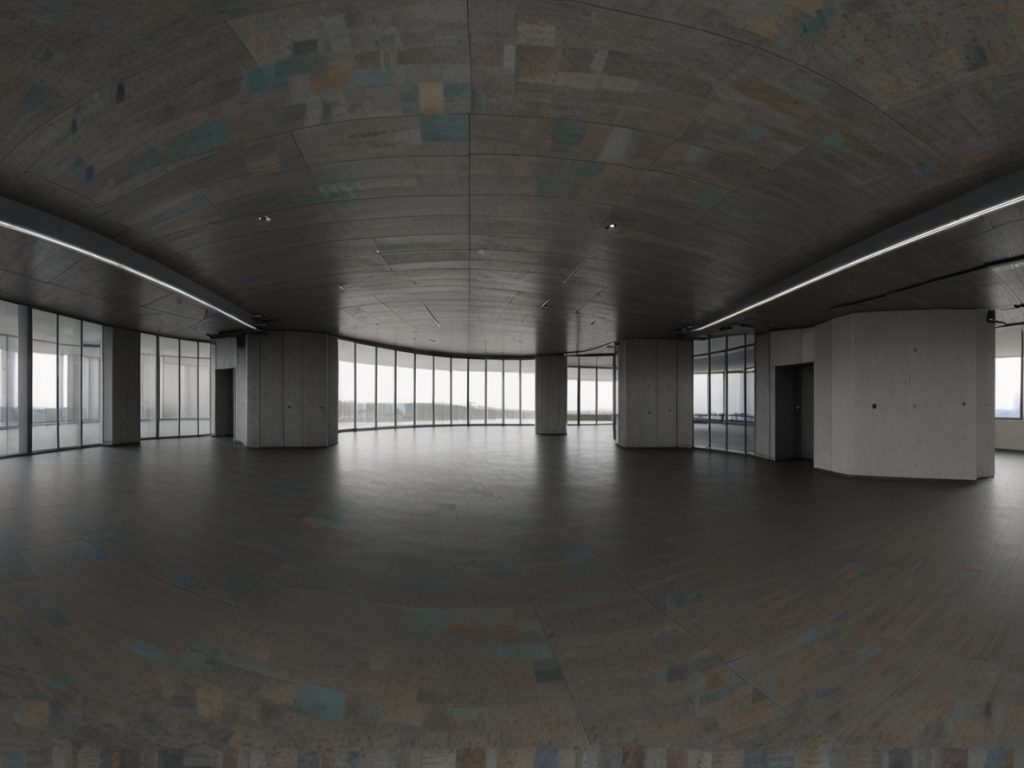
In the ever-evolving field of architecture, visualization tools have become indispensable for bringing designs to life. Among these tools, 360 panoramas stand out as a revolutionary method, offering a comprehensive and immersive experience that traditional static images and floor plans simply cannot match. By providing a complete view of a space from a single vantage point, 360 panoramas allow architects, designers, and clients to explore and interact with architectural designs in a dynamic and engaging way.
One of the primary advantages of using 360 panoramas in architectural visualization is the enhanced ability to communicate design intent. Traditional 2D plans and static 3D renders can sometimes fall short of conveying the true feel and scale of a space. With 360 panoramas, viewers can virtually step into the design and experience it as if they were physically present, leading to a better understanding and appreciation of the architect’s vision. This immersive experience helps in bridging the gap between technical drawings and the finished project, ensuring that all stakeholders are on the same page.
Another significant benefit is the increased engagement and interactivity that 360 panoramas offer. Potential clients and investors can take virtual tours of the property, exploring every nook and cranny at their own pace. This level of interactivity not only captivates the audience but also provides them with a more thorough and personalized experience, which can be a powerful tool in marketing and sales efforts.
Create interactive 360 panoramas to captivate potential clients and enhance client engagement. Offer virtual reality-enabled tours for clients to explore architectural spaces remotely, providing immersive experiences through panoramic 360 rendering. This method helps in monitoring customer reactions and preferences, allowing for tailored presentations during meetings with stakeholders.
Utilising 360 panoramas can significantly benefit businesses by improving client interactions, leading to informed decisions and positive results. Case studies have shown that incorporating panoramic views in client presentations can help in securing deals and building strong relationships with stakeholders.
Panoramic 360 rendering provides realistic representations of architectural spaces, allowing clients to experience designs in a lifelike manner. These renderings offer accuracy in showcasing architectural projects, ensuring that every detail is captured effectively. By utilizing panoramic rendering, architects can present their work with a high level of detail, enhancing the overall visual impact.
The immersive nature of panoramic 360 renderings enables clients to explore spaces as if they were physically present, offering a unique perspective on the design. This technology has the potential to revolutionize the way architectural projects are presented and perceived, setting a new standard in the industry.
Three hundred sixty panoramas significantly enhance project understanding by offering interactive panoramic views of architectural spaces. This technology allows stakeholders to visualize construction projects with immersive experiences, aiding in clear comprehension of the development progress. By utilizing panoramic 360 renderings, clients can effectively grasp architectural designs, leading to improved project monitoring and the ability to identify mistakes early on in the process. This innovative approach not only provides a clear picture of the project but also fosters better communication among all involved parties, ensuring a smoother workflow and successful project outcomes.
Enhance communication among designers, architects, and stakeholders by utilizing panoramic 360 rendering to present interior design and architectural projects.
Panoramic 360 rendering serves as a time-efficient tool for architects and designers, allowing them to spot design flaws early in the process. By utilizing this technology, professionals can streamline their workflow by obtaining realistic representations of projects before they are built. This not only saves time but also enhances the overall efficiency of the design process.
Interactive Virtual Tours offer immersive experiences through panoramic 360 rendering, allowing clients to explore architectural spaces conveniently. Virtual tours provide a unique way to showcase sites, showrooms, and buildings in a dynamic and engaging manner. With degree panoramas, clients can virtually navigate through properties as if they were physically present.
Incorporate panoramic 360 rendering to gain a competitive edge in marketing strategies. Stand out by providing clients with immersive architectural visualizations that set you apart in the industry. Enhance your marketing efforts by offering unique perspectives through panoramic 360 rendering, influencing decision-making processes positively. By utilizing this technology, you can create impactful materials that resonate with clients and aid in their decision-making. The need for innovative marketing approaches is crucial in today’s competitive job market, making panoramic 360 rendering a valuable asset for businesses looking to stay ahead.
You’ve now seen how 360 panoramas can revolutionise your architectural projects. From engaging clients to enhancing design communication, the benefits are clear. By utilising interactive virtual tours, you gain a competitive edge and save time in visualising your ideas effectively. Embrace this technology to elevate your projects and stand out in the market.
Why wait? Start incorporating 360 panoramas into your workflow today and experience the difference firsthand. Your clients will be impressed, your designs will be clearer, and your marketing efforts will be more impactful. Take the leap into the world of immersive architectural visualization and watch your projects soar.